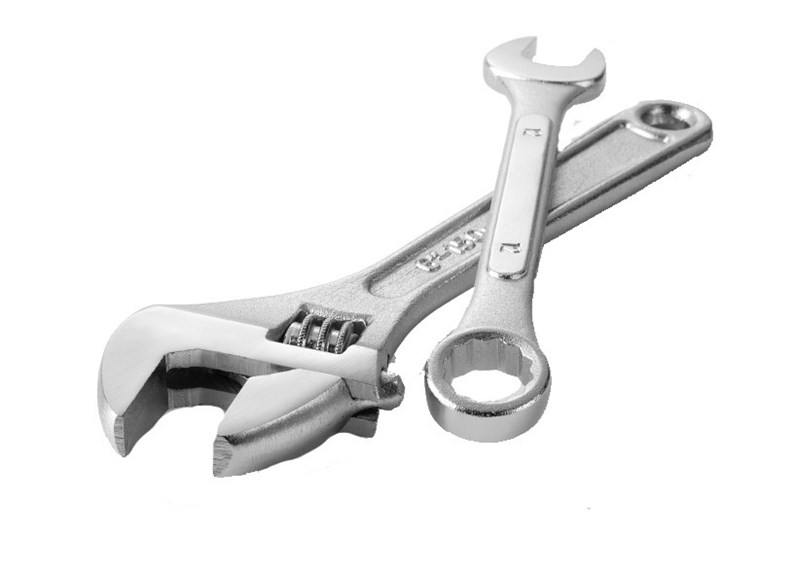Whether your HOA or condo development has a full-time maintenance staff, a few supers or maintenance people, or just occasional contractors, those workers are covered by federal Occupational Safety and Health Administration, or OSHA, guidelines. If there are safety problems on the site or one of them is injured, OSHA regulations can come into play.
Even if your complex a great preventative maintenance program, you never know what will happen. Dan Braverman, a Manhattan labor lawyer who has represented employers on OSHA-related cases in both New Jersey and New York, remembers one case where a maintenance man in a high-rise building backed into what he though was an elevator.
The elevator wasn't there, however—only an empty shaft. Unfortunately, the worker fell and died. Of course, such a condition is a violation, a complaint was made to OSHA, and the building owner was fined, Braverman recalls.
What is OSHA?
Obviously, it's helpful for a condo or co-op board or management to know at least the basics of OSHA regulations.
The Occupational Safety and Health Administration was created in 1971, a year after then-President Richard Nixon signed the Occupational Safety and Health Act, also known as the Williams-Steiger Act.
Throughout the 1960s, accidents and deaths in the workplace had been increasing. Indeed, disabling injuries increased by 20 percent during that turbulent decade. Clearly, something had to be done to protect businesses and workers alike.
Nowadays, the goal of OSHA is to ensure workers' safety and health by cooperating with both employees and employers to create better working conditions. According to the agency's website, www.osha.gov, the agency has helped to cut workplace fatalities by more than 60 percent and occupational injury and illness rates by 40 percent since it was established.
Among the many subjects covered on OSHA's site are things like asbestos removal—important for many older apartment buildings in cities like Jersey City and Hoboken that have been converted to co-ops or condos—and accurate record-keeping for job-related illnesses and injuries. Other issues include scaffolding for construction jobs, circumstances under which dust masks or air-purifying respirators are needed, the use of portable fire extinguishers, fire evacuation plans, and more.
In New Jersey, according to Harvey Staple of Safety and Risk Control Services, a workplace safety consultant in Metuchen that does a lot of work with condo associations, OSHA and their regulations are overseen by the federal government through local area OSHA offices.
In New Jersey, workers for public agencies are overseen by the state's own Public Employees Occupational Safety and Health Act or PEOSH laws. More information on PEOSH can be found at www.state.nj.us/health/eoh/peoshweb/ though the odds are that your condo or HOA won't deal with PEOSH.
Where can property managers and boards learn about their responsibilities and liabilities vis-à-vis OSHA regulations?
In addition to their websites, OSHA and PEOSH conduct outreach programs to help people learn about their responsibilities. Classes on occupational safety are also given by a wide variety of entities, from insurance carriers to unions to trade groups.
"Workers should be able to get information on the hazards they work with and the OSHA regulations facing them from their union and/or their HR departments," says Staple. "OSHA also has an 800 number for complaint reporting that is manned 24 hours a day." That number, 800-321-OSHA, is displayed in a poster that every workplace is supposed to have posted.
In Case of Injuries
What happens if a worker is injured on the job, on the grounds of your condo or HOA development, and it's determined that the development is in violation of OSHA regulations?
Usually, the accident issues per se are handled by workers compensation. OSHA, observers agree, won't appear on its own unless the incident is very big or highly publicized.
Most of the time, OSHA does not know about injuries until or unless they are notified, says Barry White, a former OSHA administrator, who now heads Barry White Associates in Potomac, Maryland. You have to have four people or more injured, or a death, or the incident appearing in the newspaper before OSHA gets involved, he adds.
Staple basically agrees, saying, "The only way an OSHA infraction would be brought to the attention of OSHA is if someone calls to complain, or they are notified because there is a fatality, or three or four workers are injured and are hospitalized." OSHA is not involved in evaluating each accident, he points out.
When OSHA does appear on the scene, and the inspector finds conditions that are not compliant with the law, he or she will probably have a conference with management and the appropriate labor union, if there is one involved. He can then go back to his or her office, and the area director will review all materials to see if any further action is needed.
Any citations that OSHA issues, Staple details, must be posted for all employees to see. Management has 15 days to either pay the fine, write a letter disputing the items, or call for a conference to discuss the citations and negotiate the penalties.
"If workers are concerned about the nature of the situation that caused the injury, they can anonymously file a complaint on their own," adds Bob Kretvix, principal consultant of EHS Innovators, an environmental health and safety firm based in Flemington. "Not all complaints result in an OSHA visit - sometimes only a phone call. Once again, the unions can help follow up on the complaint with OSHA."
OSHA regulations do not directly figure into workers compensation claims. "They are totally separate," says Braverman. That's not to say, however, that the same employees or family members who make a complaint to OSHA can't also file a workers compensation claim. For example, the family of the employee killed in the elevator accident that Braverman mentioned earlier also initiated a workers comp claim.
Staple adds that insurance companies that are reviewing claims for workers compensation do review companies' OSHA citation records and conduct site visits where they observe whether the firms (or, in this case, condos and homeowners associations) are following basic safety regulations.
How to Find OSHA
Most of the time, co-op and condo owners won't deal with OSHA regulations except when they deal with employees and contractors, and in several other instances, such as asbestos notifications.
However, if building residents, workers, or other people involved with condo or co-op boards want to report what they believe to be an OSHA violation, they can go to www.osha.gov to find out how to find OSHA offices and file complaints.
The site gives the location of regional and local OSHA offices. For example, the regional office covering New York, New Jersey, Puerto Rico and the Virgin Islands is located at 201 Varick St., New York, and can be reached at (212) 337-2378.
Within New Jersey, there are four local offices: Avenel, (732) 750-3270: Hasbrouck Heights, (201) 288-1700; Marlton, (856) 396-2594; and Parsippany, (973) 263-1003. (These do not include PEOSH offices covering public employees.)
Complaints can also be phoned into OSHA's national complaint line at (800) 321-OSHA. The website also includes material about the rights of whistle-blowers.
Raanan Geberer is a freelance writer living in New York City.







2 Comments
Leave a Comment